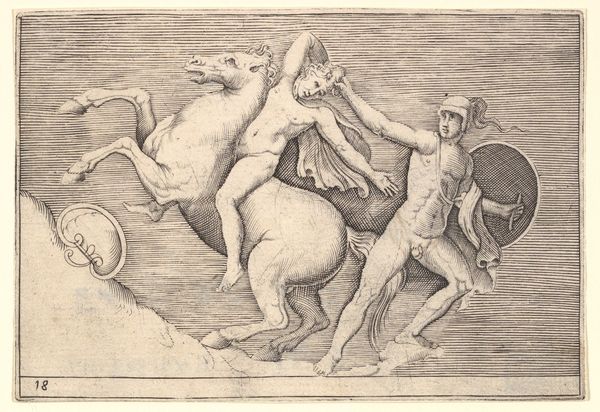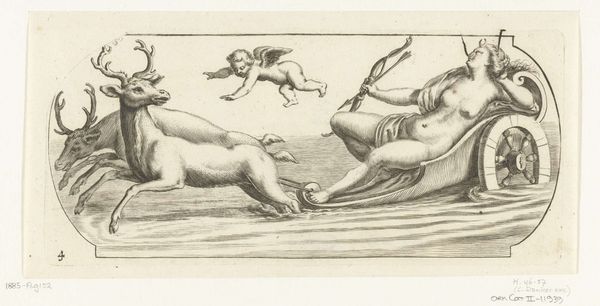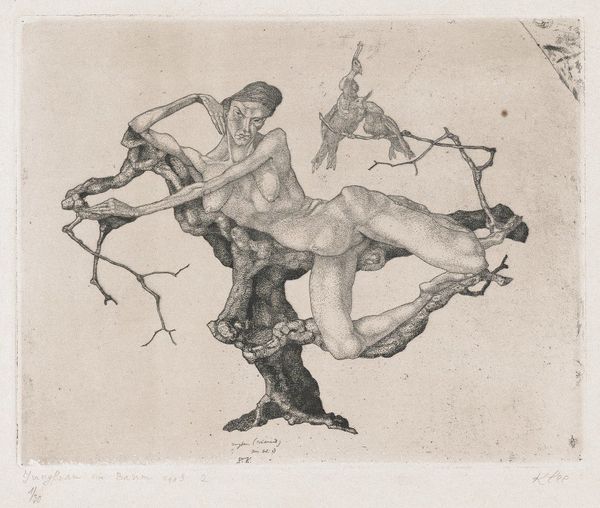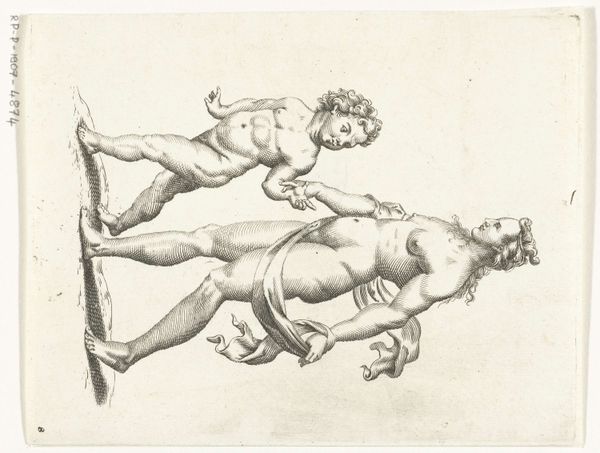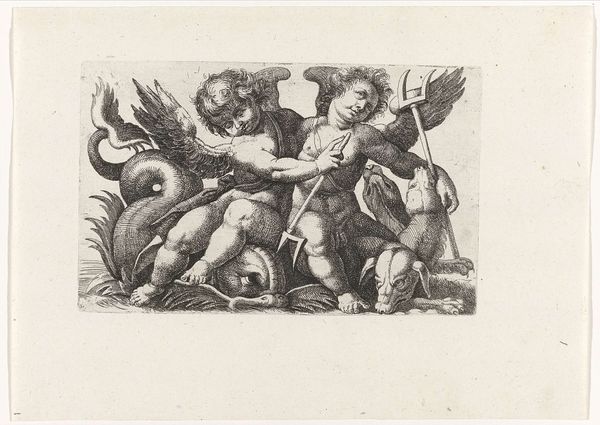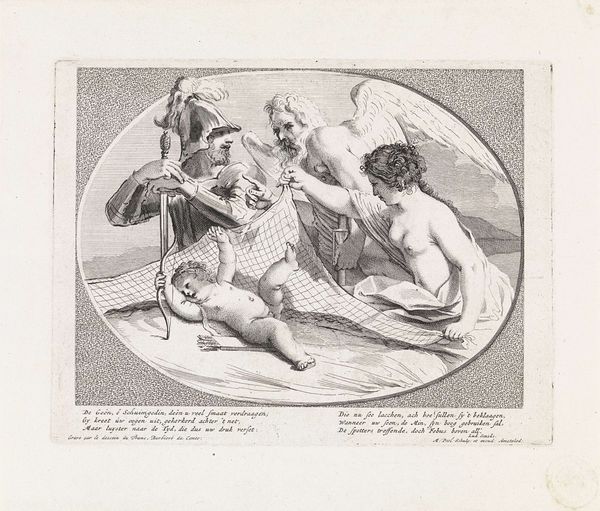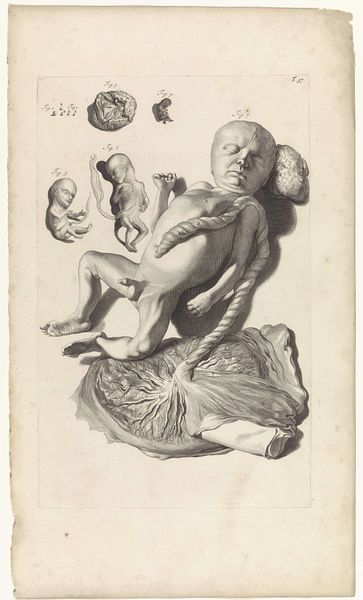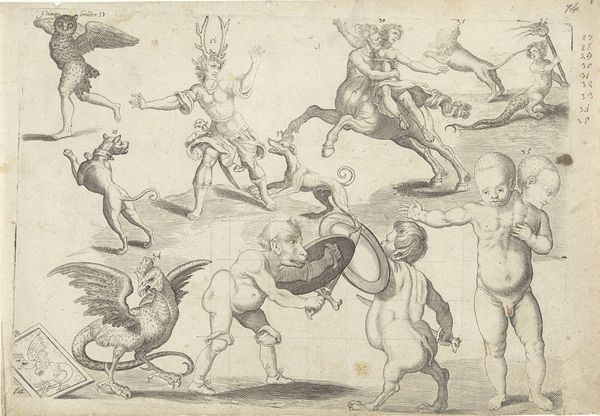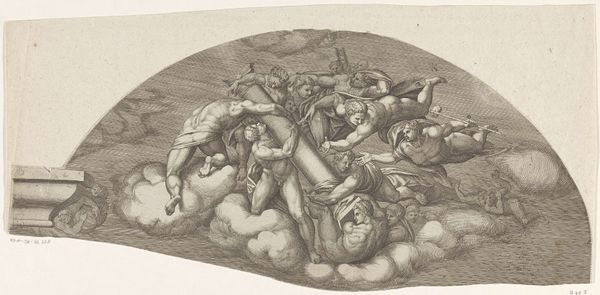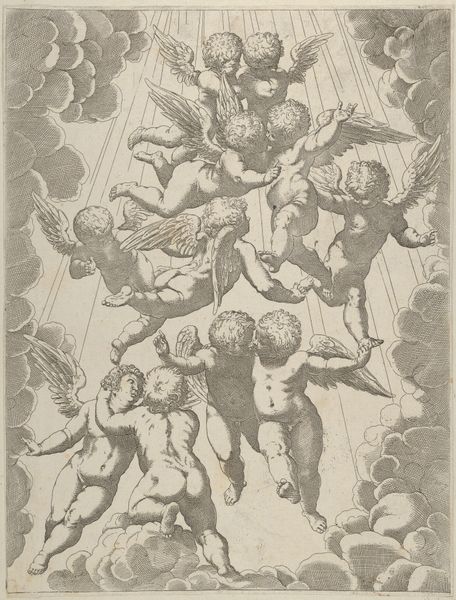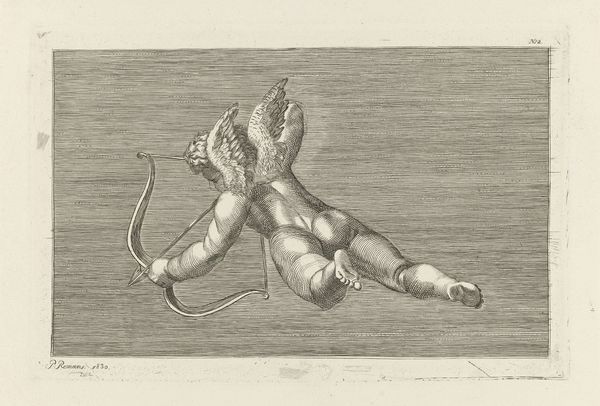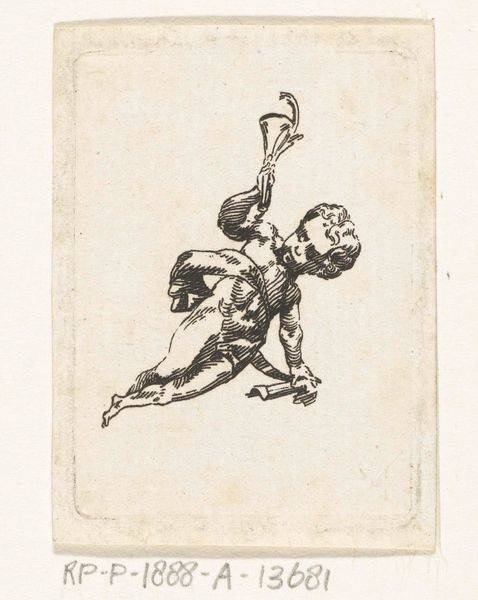
#
imaginative character sketch
#
light pencil work
#
quirky sketch
#
pencil sketch
#
personal sketchbook
#
pen-ink sketch
#
sketchbook drawing
#
pencil work
#
sketchbook art
#
fantasy sketch
Dimensions: height 243 mm, width 275 mm
Copyright: Rijks Museum: Open Domain
Editor: This is "Drie putti en een vrouwenfiguur," or "Three Putti and a Female Figure" by Leopold Löwenstam, made sometime between 1852 and 1898, in pen and ink. It looks like a sketch...almost like a preliminary study. What's striking to you about the work? Curator: The etching technique and the reproductive nature of prints invite a materialist reading. Consider the copper plate: the artist's labour, the tools involved in the etching process, the economics of print production allowing wider distribution. How might the ease of reproduction challenge traditional ideas around art as a unique, valuable object? Editor: So you're saying it's not just about the cherubs and the woman, but also about how this image got made and shared? It makes me wonder how many prints were made. Curator: Precisely. And what was the social context for those prints? Were they destined for a wealthy collector’s album or for dissemination among a broader, perhaps less affluent, audience? Think about the role of reproductive prints in democratizing access to art. Editor: That’s a totally different way of thinking about it! So, someone could have purchased this and framed it, but also a student may have collected the same image? Curator: Yes, or considered them source material! Think of it like visual raw material available for incorporation into other works, or inspiring new ones, blurring the lines between originality and appropriation. Are there any elements that point to how the artist conceptualized that process? Editor: The sort of draftsmanship feel it has? That suggests process and labor! Curator: Exactly. By foregrounding the sketch-like quality, Lowenstam subtly acknowledges the labour involved in creation. These aren’t effortless visions; they're products of skilled work and material processes. Editor: That definitely makes me see the artwork as a document of both creative thinking and also the artistic manufacturing. It's interesting how this method reframes our views of both what is art and the work behind art. Curator: And its access, its circulation, its value – both cultural and monetary!
Comments
No comments
Be the first to comment and join the conversation on the ultimate creative platform.
